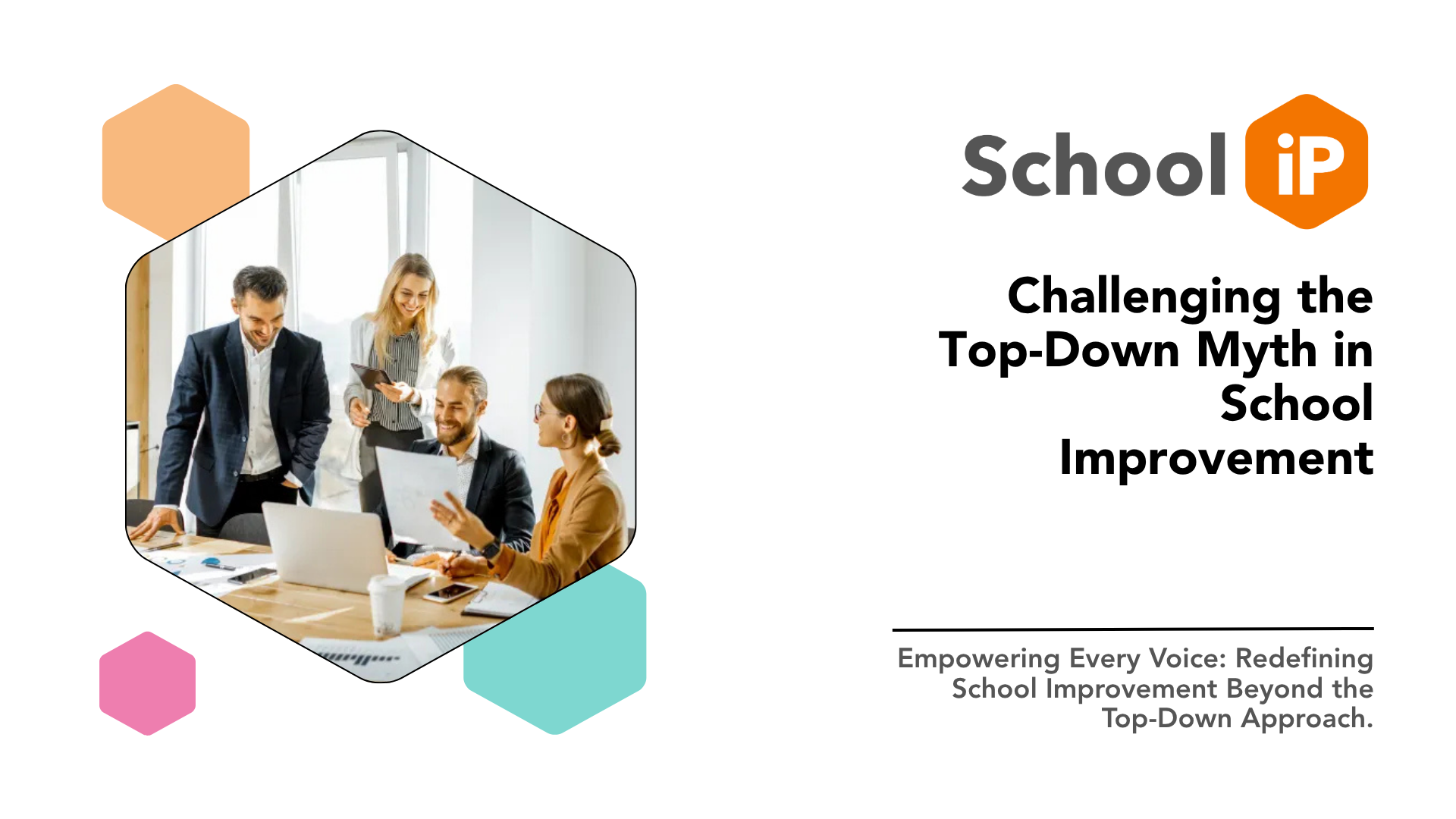Challenging the Top-Down Myth in School Improvement


School improvement is an ongoing priority for every educational setting. It is often associated with planning documents, leadership initiatives, and inspection outcomes. However, behind the paperwork lies something far more important: the culture and collaboration that drive real, lasting change.
One persistent misconception is that school improvement is the sole responsibility of senior leaders. While leadership sets the vision, real improvement happens when that vision is shared, understood, and enacted by everyone in the school community. In this insight, we explore why school improvement should not be viewed as a top-down process and how schools can create the conditions for inclusive, sustainable progress.
School improvement is the structured process through which a school enhances its practices, systems, and outcomes to better serve its pupils and community. It includes academic attainment, personal development, staff wellbeing, teaching quality, leadership effectiveness, and the overall school culture.
Effective improvement is strategic and intentional. It involves goal setting, data analysis, reflection, professional development, and the embedding of best practices. It is not a one-off event or a response to external pressure, but a continuous effort to raise standards and ensure equity for all learners.
Many schools, often unintentionally, adopt a top-down model of improvement. Senior leaders create plans, define priorities, and implement strategies, expecting the wider staff body to follow suit. These plans may be shared in staff meetings or outlined in policy documents, but without real dialogue or input from the people responsible for putting them into action.
This model assumes that improvement flows from the top, with limited space for collaboration or adaptation at different levels of the organisation. It risks disengaging staff, who may feel that improvement is something being done to them rather than something they are part of.
It can also create a disconnect between leadership intentions and classroom realities. When teachers, support staff, and other team members are not involved in shaping improvement priorities, valuable insights are lost. In the long run, this can result in resistance, inconsistency, and missed opportunities for innovation.
Genuine school improvement is a shared endeavour. It is most effective when every individual understands the school's goals and feels empowered to contribute to them. Leaders provide direction, but improvement becomes sustainable when it is co-owned by staff, students, governors, and even parents.
Distributed leadership, where responsibilities and decision-making are shared more widely, is increasingly recognised as a key driver of positive change. Teachers who lead initiatives, support staff who contribute to behaviour strategies, and departments that engage in joint inquiry are all examples of collaborative improvement in action.
This collective model encourages innovation and professional autonomy. It promotes a culture where staff feel trusted and supported, rather than simply managed. It also builds resilience by ensuring that improvement does not depend solely on a few individuals but is embedded across the school.
Moreover, engaging students in the improvement process through feedback, voice surveys, and co-construction of learning experiences can lead to a deeper, more relevant understanding of what needs to improve and why.
School improvement should not be confined to leadership meetings or strategic documents. It should be lived and experienced throughout the school. When staff are included in decision-making and given the tools to reflect, develop, and collaborate, they become active participants in the process.
Moving away from a top-down mindset allows schools to tap into the full potential of their teams. It also fosters a culture of mutual respect, professional growth, and continuous learning. Improvement becomes part of the school’s identity, not just its leadership agenda.
SchooliP is designed to support schools in creating a culture of collaborative, transparent improvement. It provides a unified platform where leadership vision aligns with individual staff development and team-based action.
With SchooliP, schools can:
Involve all staff in self-evaluation through structured feedback, evidence collection, and reflective tools.
Empower teachers and support staff to set personalised development goals that connect to whole-school priorities.
Monitor and support performance management in a way that values growth and professional dialogue.
Promote collaboration across departments through shared CPD logs, coaching records, and lesson observation feedback.
Demonstrate clear, joined-up thinking between strategic planning, appraisal, and professional development.
By making every staff member visible in the improvement journey, SchooliP helps schools build a culture where progress is everyone's responsibility and success is shared.